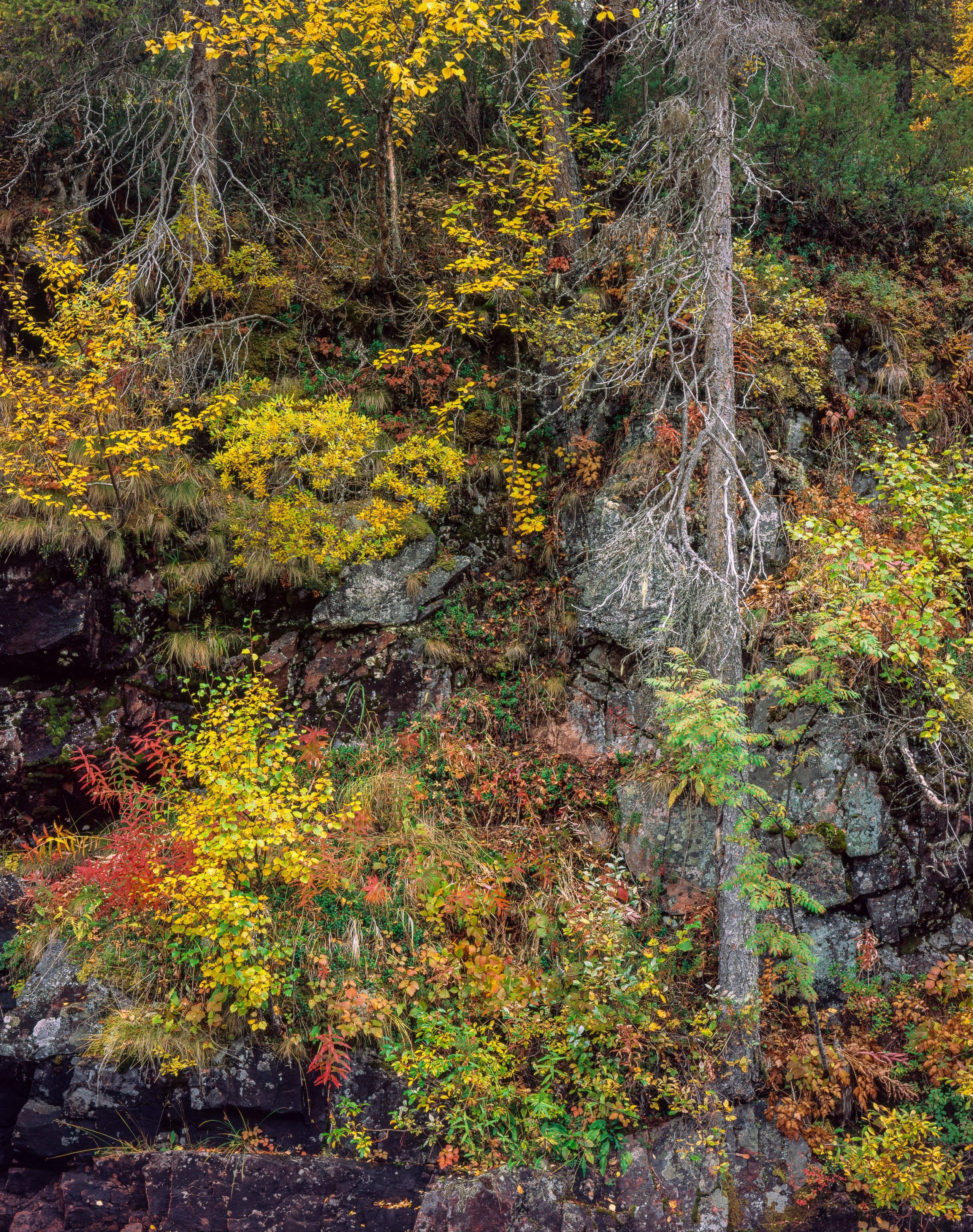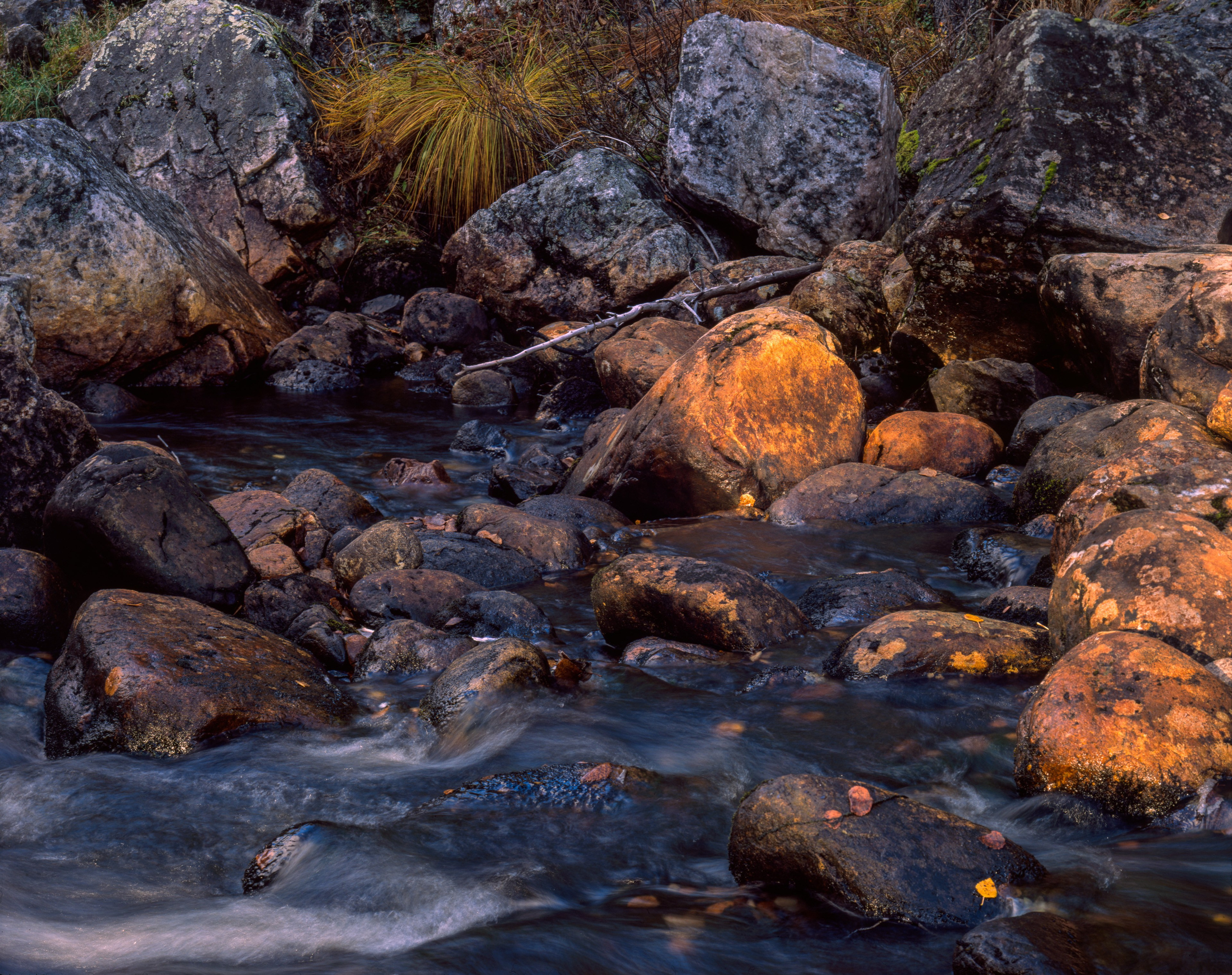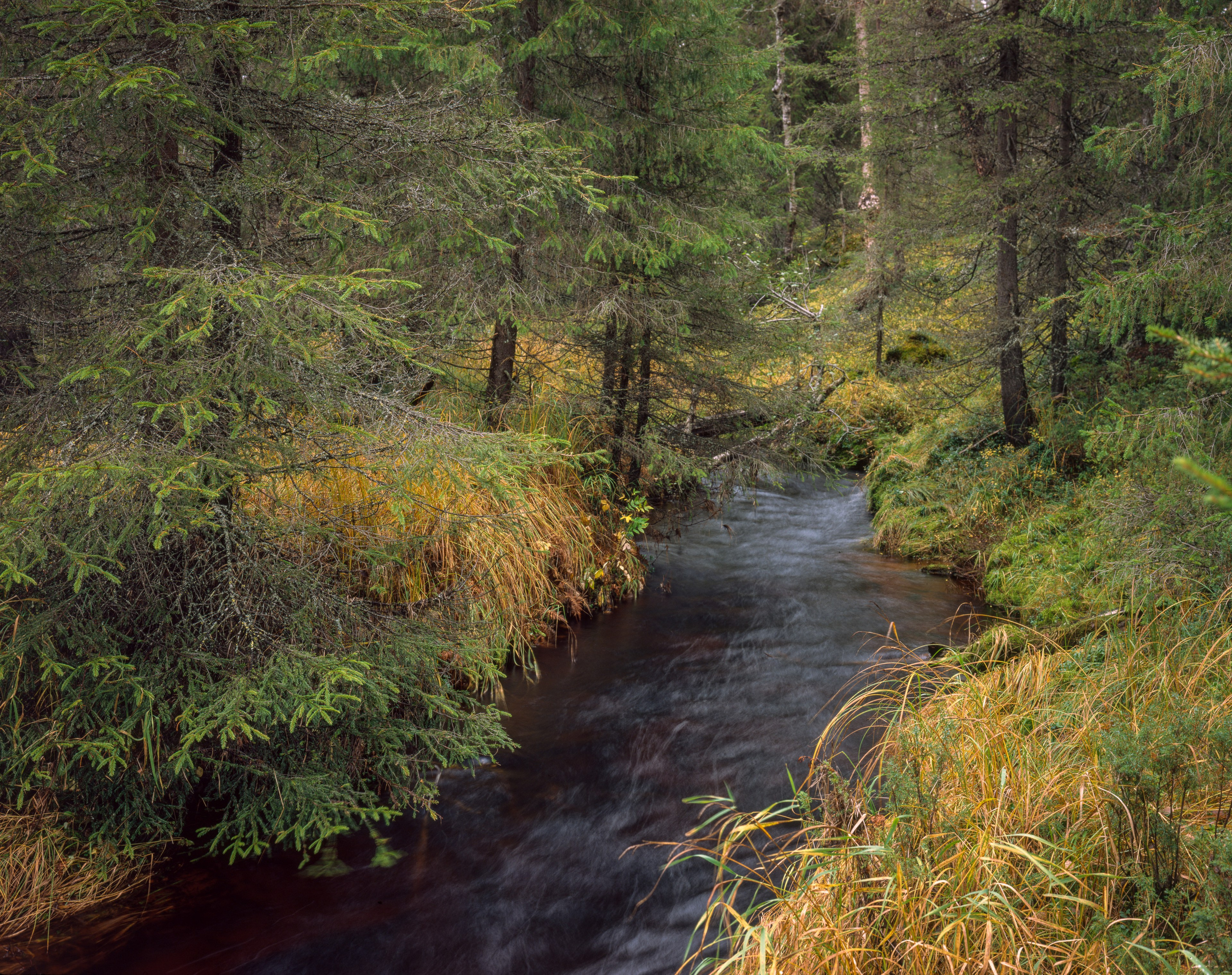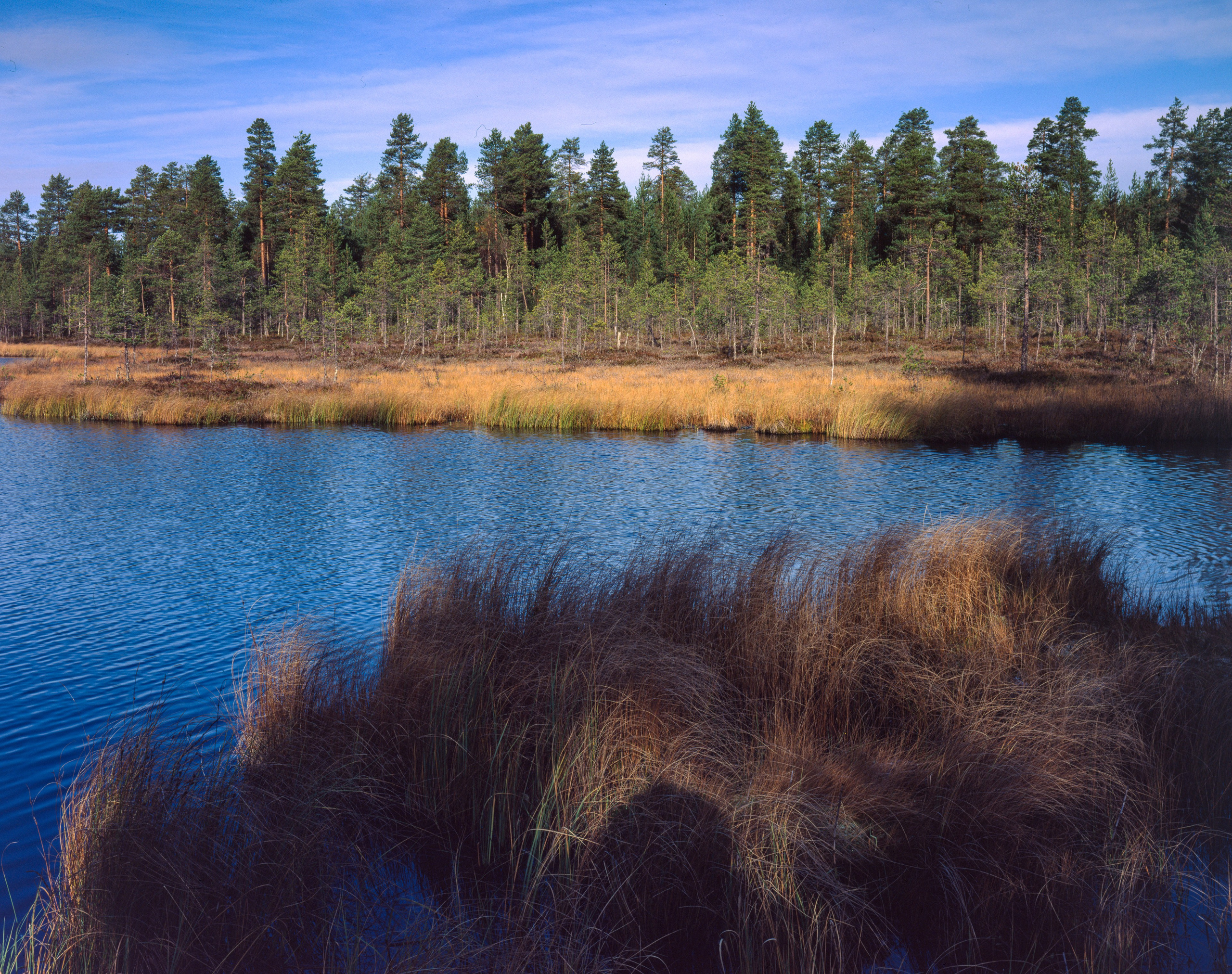These films were accumulating for a whole year, maybe even more. I don’t shoot a lot of film, and the reality of the color development is such that the chemicals go bad fast. A batch can’t be stored but can develop quite a lot of film. For example a pint-sized E-6 kit for slides can handle about 32 sheets of 4×5 film, maybe even more. Would be nice to have those 32 sheets ready for development then, before mixing the chemicals. So the year went by.
The year did pass, but I still haven’t got that many captures. There were only 23 to develop, I think. Many of those turned out quite nice technically, and some even artistically. Naturally, long-term storage at room temperature did not do them any good. The oldest ones have a significant color deterioration in direction of greenish-brown. Fortunately, it is generally correctable, and the colors seem to have been restored well.
I was concerned about certain frames — really did want those to turn out ok. Showing in capture order — from old to new. The renditions are very draft, the color is imprecise, mistakes not fixed. This might take another year.
Pine slope in Auttiköngäs. This whole area is very lovely but doesn’t lend itself easily to composition. This is one of the few scenes I was able to pick out coherently. It was on my mind for a year or two, and there, did it. Technical deficiencies are rather obvious, and the color needs to be corrected.
A gorgeous rock wall in September’s Salla. Here the color was mostly repaired, though some correction is still necessary. I was worried about this image even though it has a digital double. Interestingly, the digital one has such a weak color separation I’m not even sure it can be fixed. Here all the colors are where they should be, and, hopefully, are true.
The bottom of a hundred-meter ravine in Salla, not far from the previous scene. The lighting is quite picturesque, but the shot had suffered from the long storage more than the others. On film it looks like a mess of browns. This is still somewhat apparent in the tree tops, just like the pinkish tint of the waterfall. The distortions are non-linear, might take some effort to fix.
A very dear scene of mine in Salla. The dynamic range is colossal. When shooting I was thinking it was unlikely to turn out well. Had to choose: to save the highlights or the shadows. The highlights are usually to go for, and that’s what I did. Surprisingly, both ended up fine, however, the shadows due to their density did not scan well. The praise should probably go to the chemicals, which are optimized for scanning. They expand the film’s dynamic range, deviating from the standard E-6 process. That is, it would be difficult to print from such a film, but the extra dynamic range works quite well for scanning.
There is some brown shift as well, and the exposure needs some work, but I’m glad the foundation turned out solid.
I really hoped for this frame to turn out well. The fir tree is enormous, width and height. Just as I’d set the camera the sun went away — and this fir is standing in the midst of a ravine where the light is diffuse. Waited for some light to fall on the grasses behind, and at the first opportunity took the shot.
A bend of the Kuohunkijoki river. An ordinary place, some dwellings nearby, but here there is a meadow, a birch grove, and rapids, all within a small area. I was thinking about coming here in the midst of the Indian summer, but came too late. There is a group of trees of different species on the meadow — hoped to witness the color, but didn’t manage. Ended up shooting the last remaining orange birches on the bank.
The other of the riverbank birches, with a pinkish trunk. This is, of course, a defect of color. The sharpness is not quite good either — must have jerked the camera. This frame has a digital double, and a good one, but I was hoping the film would come out nice, too. There is a beautiful pattern on the flowing water. Maybe it can still be rescued.
River banks in the upper reaches of Korojoki. There is a cozy valley and a multitude of little scenes. The gamut is quite restrained, but I think it’s natural. These frames didn’t have to wait too long for development, so the color is generally intact. Nevertheless, there is some unnecessary pinkish tint in the highlights. It might be a result of a poorly filtered infrared channel of the scanner. This defect is common between many frames and seems not to depend on the film storage history.
Same place and even the same fir tree. Quite a bit of correction is still in order even though the exposure is exactly the same as on the previous shot. There are fewer shadows in the background, so the image lacks depth. However, the fir trees are cute, so gonna take a look whether this can be improved.
Another important image I was concerned about. The scene, I think, is quite picturesque, but I only took a film capture. There is no digital double and it is difficult — if not impossible — to repeat, at least this year around. But, ignoring the shining pink tones on the fallen tree, it turned out well. The pink tones, of course, can and should be fixed.
A dry trunk in front of a pretty rock wall near the beginning of the Korouoma trail. I explored this scene quite thoroughly during the summer. Here I was trying, as an experiment, to pick out the main plane using focus. On the one hand, it worked, but on the other, the junipers in the foreground went out of focus in a distracting way. I don’t think this image can be fixed, but the focus effect itself is pleasing.
A long-awaited scene on a small lake close to the town. I visited it a couple of years ago, picked out the scene, but didn’t took a shot — got lazy. Was waiting for the season ever since to come back. That time the weather was colder — there was already some ice. Here there may be some frost, but no ice. That magnificent silhouette at the middle bottom hopefully isn’t of myself. However, while I was waiting for the sun I started freezing, the camera took a list, and I might’ve missed the matter. Gotta retouch somehow, I guess.
One sunny rowan. A very bright one, but I’m not certain the color is correct. Didn’t spend a lot of time on it, but I do like the shot. While I was waiting for the light a bird came and went, maybe a turdus, sat on the branches. I wondered whether it’s gonna be on the shot, but no. When the sun came out the bird was away. Though the rowanberry stayed.
The last frame — a speed record. Developed in a couple of hours after the capture — an unprecedented feat. The vertical rainbow is the eastern part of a Halo phenomenon, where shining spots appear at the sides of the sun, and also above it in a cold weather. Sometimes these can be seen up close — they are enormous!

















